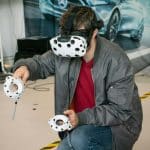In today’s digital age, streaming video content on tablets has become a staple of entertainment. Whether it’s catching up on the latest episodes of your favorite series or watching educational videos, the seamless performance of streaming apps is crucial. However, issues like video buffering and slow internet speeds can hamper your viewing experience. This article explores effective techniques to improve the performance of streaming apps on tablets.
Optimize Your Internet Connection
The quality of your internet connection is a significant factor in the performance of streaming apps. When you experience buffering, one of the first things you need to check is your internet speed.
A lire aussi : How Can You Use Your Smartphone to Manage and Track Freelance Projects Efficiently?
To begin with, ensure that you are connected to a reliable wireless router. Place the router in a central location in your home to avoid dead zones. Using an android phone or tablet, you can use apps like Wi-Fi Analyzer to determine the best location for your router. If you find that your internet speed is still insufficient, consider upgrading your internet plan.
Running a speed test can give you a clearer picture of your internet performance. Apps like Ookla’s Speedtest can help you identify your current download and upload speeds. For streaming HD video, your internet speed should be at least 5 Mbps; for 4K video, it should be at least 25 Mbps.
En parallèle : What Are the Key Factors in Choosing the Best Cloud Backup Solution for Your Smartphone?
Additionally, limit the number of devices connected to your internet. Too many devices using the same network can slow down your connection. If possible, use an ethernet cable to connect your tablet directly to your router to ensure a stable connection.
Adjust Streaming App Settings
Another effective technique to enhance the performance of streaming apps on tablets is to adjust the settings within the apps themselves. Most streaming apps like YouTube and Netflix offer various options to reduce buffering and improve loading times.
First, navigate to the settings app on your tablet and open settings for the specific streaming service. Here, you can usually adjust the video quality. Lowering the video quality can significantly help reduce buffering. For instance, if you’re watching YouTube videos, you can tap the settings icon on the video screen and choose a lower resolution.
Additionally, explore the data saver settings in your streaming apps. Enabling these options can not only save data but also enhance the smoothness of video playback.
Enabling the device care features on your android tablet or android phone can also optimize performance. These features often include memory optimization, battery management, and automatic app cache clearing. Keeping your device in good health ensures that streaming apps run more efficiently.
Clear Cache and Data
Over time, streaming apps accumulate a cache of data that can slow down their performance. Regularly clearing the cache and data can free up space and enhance the speed of these apps.
To clear the cache, go to your tablet’s settings app, then navigate to App Management or a similar section, depending on your device. Find the streaming app you’re using, tap on it, and select Clear Cache. This will remove temporary files that may be causing the app to lag.
You can also opt to clear browser data if you’re streaming through a web browser. Navigate to the browser settings and find the option to clear browsing data, including cached images and files.
Moreover, keep your apps updated. Developers frequently release updates that improve performance and fix bugs. Regularly check for updates in the Google Play Store and ensure that all your streaming apps are up-to-date.
Utilize Device Performance Features
Modern tablets come equipped with various features designed to optimize performance. Utilizing these can significantly improve your streaming experience. For example, in the device care section of your android tablet, you can find tools to manage battery usage, storage, and RAM.
Enable features like Battery Saver to extend battery life, especially during long streaming sessions. Some tablets also offer a Performance Mode, which prioritizes resources for apps in use, ensuring smoother operation.
Another useful tip is to periodically restart your device. This simple step can clear out temporary files and refresh system processes, leading to better performance for all apps, including streaming services.
Lastly, consider using performance-boosting apps that are designed to optimize your device’s overall functionality. These apps can help manage background processes, clear unnecessary files, and ensure that your tablet is running at its best.
Improve Network Configuration
Beyond optimizing your internet connection and device settings, enhancing the configuration of your router can also boost streaming performance. Accessing your router settings may seem daunting, but it can have a profound impact on your internet speed and connection stability.
First, ensure that your wireless router is using the latest firmware. Manufacturers often release updates that improve performance and security. Log into your router’s web interface (usually found at an IP address like 192.168.1.1) and check for firmware updates.
Next, consider changing the broadcast channel of your router. Routers typically operate on the 2.4 GHz and 5 GHz bands. The 2.4 GHz band is more prone to interference from other devices, while the 5 GHz band offers faster speeds but a shorter range. Switching to a less congested channel can reduce interference and improve streaming quality.
You can also enable Quality of Service (QoS) settings on your router to prioritize streaming data. This means that your router will allocate more bandwidth to streaming apps, reducing buffering and improving video quality.
Moreover, ensure that ports used by streaming services are open. Some routers have built-in security features that may block certain ports, hindering the performance of streaming apps. Consult your router’s manual or manufacturer’s website for details on how to manage port settings.
Improving the performance of streaming apps on tablets involves a multifaceted approach, encompassing internet connection optimization, app settings adjustments, cache and data management, device performance features, and network configuration. By following these techniques, you can significantly enhance your streaming experience, reducing buffering and enjoying high-quality video content seamlessly.
Streaming should be an enjoyable experience, free from interruptions and delays. With the detailed techniques outlined in this article, you are well-equipped to tackle common streaming issues and make the most of your tablet’s capabilities. Whether you are using an android tablet or another type of streaming device, these strategies will ensure smooth and efficient performance, allowing you to immerse yourself fully in the world of streaming video.
Remember, the key to optimal streaming performance lies in a combination of factors—each step you take plays a crucial role in delivering the best viewing experience.











